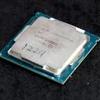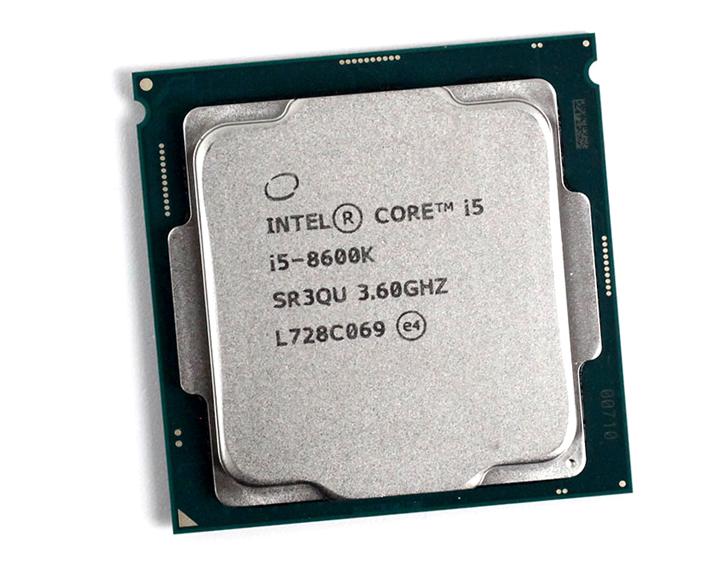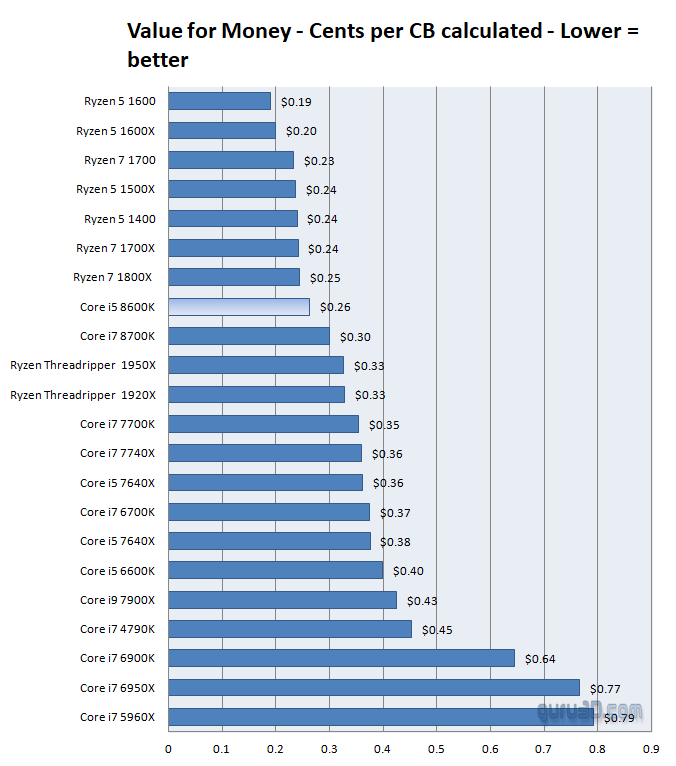Final Words & Conclusion
Conclusion
Intel's new Core i7 8700K managed to impress, the Core i5 8600k is, however, the more sensible solution for a gamer. For the multi-threading mongers however you will have to forfeit a little lacking Hyper-threading and the smaller L3 cache, that is measurable and noticeable on the overall performance. But you do get six proper gaming cores that are able to tweak to very nice regions as well. Once again strictly speaking though as you have seen, if you look at IPC at 3500 MHz then Coffee Lake certainly isn't any faster compared to the previous gen product. However, Intel benefits greatly from the fact that they can reach high clock frequencies. Turbo mode 3.0 remains a bit of a gimmick, little software is totally single threaded these days, but it places 4.3 GHz on the box packaging with big chocolate letters which is great for their marketing. Realistically though, Intel reaches 4.1 GHz on all six cores, that fact by itself is very nice, the platform also manages heat and power consumption at very acceptable levels.
Performance & tweaking
We tested multiple Z370 motherboards all with the latest BIOS. I'd rate the new 6-core processor as 'good' for the results as tested looking at it as an overall processor, and 'very good' for gaming versus money invested. Temps are fine under default circumstances and clocks frequencies. Once tweaked we noticed that the six cores like extra voltage, however with fairly little extra juice we expect all-core tweaks in the ~5 GHz marker. Anything higher and you are looking at 1.35V with higher tweaks in the ~1.38 Volts ranges on the processor. That, however, does increase power consumption though wasn't something that scared me away. Temps at such voltages reach an 80 to 90 Degrees C marker, which is hot and as such you will need a proper heat pipe cooler or preferably a liquid cooling kit that offers that little extra cooling capacity when stressed. The infrastructure that Z370 offers is easy to use, you increase the CPU voltage and multiplier and you are good to go. Another plus for the Intel platform is that over the years they have been able to refine their memory controllers, pop in anything XMP 2.0 and you have a 90% chance it'll work straight out of the box with very fast memories. Mind you that all our tests are performed at 3200 MHz DDR4, similar to Ryzen and Threadripper to remain objective and for fair play on both sides.
Power consumption
With this six cores and twelve threaded proc you get a 95 Watt TDP processor. With the system at idle with a GeForce GTX 1080 installed / 16 GB memory / SSD and the Z370 motherboard, I hovered at roughly 50 Watts in IDLE. That's just fine and normal really, but the load values are okay. When we stressed the processor 100% run we reach roughly ~125 Watts with this 6-core / 6-threaded part. When we game we hover at ~270 Watts with the GeForce GTX 1080, but obviously that factor is dependent on the type of graphics card you use of course and sure, most games certainly do not utilize the six CPU cores. Overall I have no worries here.
Prices and value
In the above a mathematical plot, we take the CB score from CineBench 15. We normalize the value and basically plot how much money it takes to calculate the CB score. All processors are clocked at default frequencies, this plot would look different if you'd math in tweaked clock frequencies and thus get higher CB scores. Also, you need to take the number of CPU cores into account (as in what number of CPU cores is relevant for you). But this is very simple math, have a peek at the chart (the higher a CPU is positioned the better).
So what are you seeing?:
- An 8-core Core i7 5960X costs 79 cents per calculated CB.
- An 8-core Ryzen 7 1800X costs 25 cents per calculated CB.
- A 6-core Ryzen 5 1600 costs just 19 cents per calculated CB.
- A 6-core Core i5 8600K costs just 26 cents per calculated CB.
- A 6-core Core i7 8700K costs just 30 cents per calculated CB.
- A Core i9 7900X costs 42 cents per calculated CB.
This is a fairly arbitrary subjective chart as it is based on just one test, but it does paint a certain picture. And please do not confuse the chart as to 'what is the better processor'.
DDR4 Memory
For Coffee Lake (8th Gen Intel procs) DDR4 may be clocked a notch faster at 2400 MHz as per Intel reference. We always say, volume matters more than frequency. A 3,200 MHz kit, for example, is far more expensive and does offer better bandwidth but the performance increase in real-world usage will be hard to find. Unless you transcode videos over the processor a lot. As always, my advice would be to go with lower clocked DDR4 memory with decent timings, but get more of it. Don't go for 8 GB, get four DIMMs and in total a minimum of 16 GB. The reason we test at 3200 MHz is simple, we do the same for AMD Ryzen and want to create a fair and equal playing ground for both.
Final words
I like the Core i7 8700k, yet I tend to like the Core i5 8600k even better if you look at it from a gaming perspective versus value. Now I know the value is a hard thing to find with an Intel processor considering the overall platform costs have to be added into the equation as well, but you have seen that CB/price rating. That's not bad, at ~270 Euros it's also at a price level I am comfortable with. The thing with the 8600k is that you can likely tweak it close or just over 5 GHz, and there are extra benefits and perf to be found there. This Z370 / Coffee Lake launch feels much more refined compared to what happened with X299 / Skylake-X. We didn't run into any weird issues whatsoever aside from one BIOS update to get the 3866 MHz memory compatible. Performance wise the 8600K proc offers very decent multi-threaded per but shines in gaming with fast game performance and its very nice tweakabilty (aside from temps at +1.350V and higher voltages). So more or less cores? Well, in my opinion, the age of the quad-core processor is a dying one. AMD sparked and ignited something in the processor and developer landscape with the release of affordable Ryzen 8-core parts. If you look for more value, I find the 6-core parts to be the better balance for what is realistic for today's gaming PCs relative to pricing and overall needs. Worthy of note is that we reached 5000 MHz on all cores. That was stable enough offering decent enough temps (with our sample at hand). This processor offers 16 PCI Express Gen 3.0 lanes for graphics. The chipset will add more for your storage like SATA3 / USB 3.x / M2. DDR4 memory up-to roughly 4 GHz can be installed (dual-channel) depending on motherboard support of course. While I do miss Hyper-Threading / SMT (it really makes an OS and your applications faster) out of the entire Coffee Lake range of processors, this might be the most sensible one. If you are a gamer, it's just really good.
Handy related downloads:
- Sign up to receive a notice when we publish a new article
- Or go back to Guru3D's front page.




